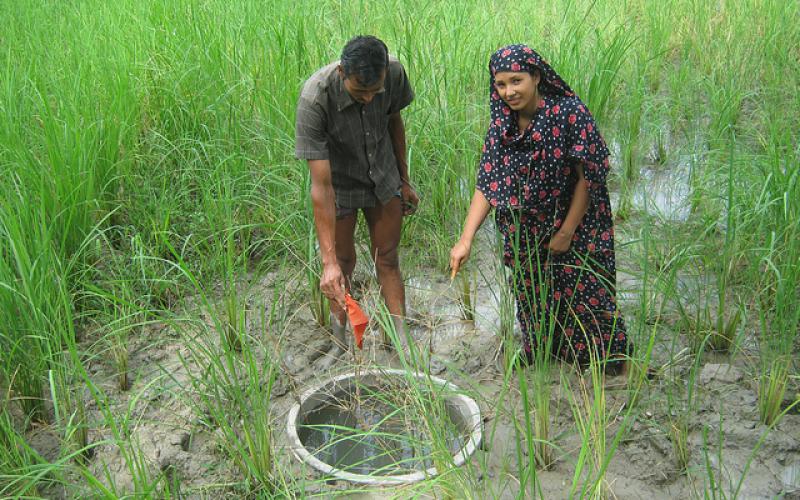
A guest blog by Melody Braun, the Bangladesh focal point for the CGIAR Research Program on Climate Change, Agriculture and Food Security (CCAFS), who reflects on the implementation of fish rings in Jhalokhati, Bangladesh.
Recommended publications
- SmartFarm monitoring and evaluation framework and strategy white paper
- SmartFarm monitoring and evaluation framework and strategy white paper
A guest blog by Melody Braun, the Bangladesh focal point for the CGIAR Research Program on Climate Change, Agriculture and Food Security (CCAFS), who reflects on the implementation of fish rings in Jhalokhati, Bangladesh.
Fish and fisheries play an important role in food security in Bangladesh, with fish representing 58 percent of all animal protein consumption, as well as a vital source of vitamins and nutrients. However, natural fish populations depend on favorable environmental conditions. Increased incidence of floods, droughts and erratic rainfall, which are increasingly affected by climate change, negatively affect species diversity, composition and productivity.
The SmartFarm project is looking at strategies to enhance both the productivity and diversity of fish in the context of a changing climate.
The fish habitat development rings are based on indigenous strategies that have been practiced for years by farmers in Laos and Bangladesh and have been successfully tested in rice fields in Cambodia. The strategy consist of digging holes in the rice fields, strengthened with sets of three concrete rings of a diameter of 30 inches and a depth of one foot, in order to provide a water reservoir for fishes when the water level in the rice fields is decreasing.
In Bangladesh, the rings will allow the farmers to face increasing variations and unpredictability of rainfall by ensuring viable fish populations in rice fields. The success of the strategy relies on strategic placement of rings, local governance to regulate fish capture and ensuring they are connected to ponds and canals.
Installation of 180 fish habitat development rings and the launch of community-based research were the first activities of the SmartFarm project. The research will test the modification of rice field habitats in order to recreate more resilient and natural fish environments resulting in increased productivity and diversity of fish and other aquatic animal species, through the creation of the ring shaped fish sanctuaries.
The implementation of the fish rings was more time-consuming than expected due to the variations of water level. The heavy rains and the weekly tidal effect, combined with the fact that the clay soil retains water so well, complicated the digging of the holes. Conversely, the weekly withdrawal of water with the low tide stopped the transportation of rings by boat to the implementation sites.
The community had shown enthusiasm for the rings. A few days before the launching ceremony, I visited the village and was impressed to see the strong involvement of the whole community. Some workers were in the field implementing the last rings, while others prepared for the launching ceremony. Teachers from the three local schools in the area had gathering the drawings made by 100 children for a drawing contest we had organized on the theme of the fish habitat development rings.
More than 750 community members gathered for the launching ceremony, crowding the room of a school where a representative of the local sub-division came to give a speech. After the speeches, some farmers explained how they would prevent over-fishing in the rice fields and fishing in the rings to allow the fish population to grow.
As the SmartFarm project continues, our next focus will be on the monitoring and evaluation phase to ensure strong data collection, analysis and a robust learning process.